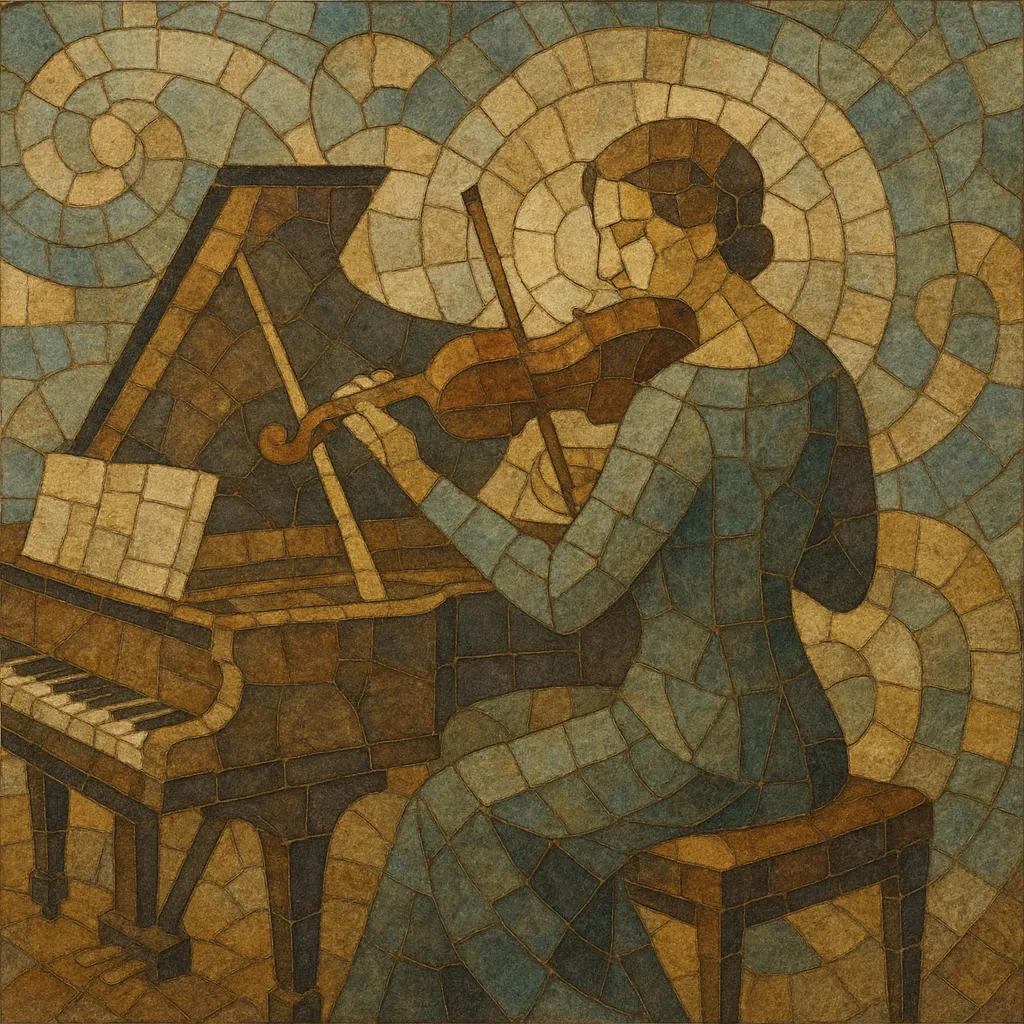A sonata is a multi-movement work for one or a few instruments that developed as a principal vehicle of instrumental expression in European art music.
In the Baroque era it referred broadly to “music to be sounded” (as opposed to “cantata,” music to be sung) and commonly appeared as the trio sonata (two treble instruments plus basso continuo) in church (sonata da chiesa) or chamber (sonata da camera) contexts. In the Classical era the term narrowed to denote a cyclical, architecturally unified piece for solo keyboard or for a solo melody instrument with keyboard, typically in three or four movements with the first movement in sonata form (exposition–development–recapitulation).
Across the 18th–20th centuries, composers used the sonata as a laboratory for harmonic drama, motivic development, and contrasting characters—ranging from the poised clarity of Haydn and Mozart to the structural expansiveness and psychological depth of Beethoven and Romantic successors.
The word “sonata” surfaced in Italy in the early 1600s to distinguish instrumental (sonata) from vocal (cantata) music. Early sonatas drew directly from the instrumental canzona and ricercar and split into two types: the sonata da chiesa (church sonata), usually in a sober, four-movement sequence (slow–fast–slow–fast), and the sonata da camera (chamber sonata), essentially a suite of stylized dances. Corelli codified the genre’s textures and tonal clarity, and Scarlatti later authored hundreds of single-movement keyboard sonatas rich in virtuosic figuration and bold harmony.
In the Classical period the sonata became the central chamber genre and a formal ideal. Haydn and Mozart stabilized a multi-movement cycle for keyboard and for violin/cello with keyboard, and crystallized first-movement “sonata form”: a tonal plan that contrasts themes in different keys, develops them through modulation and fragmentation, and resolves tension by recapitulating material in the home key. Periodic phrasing, clear thematic profiles, and balance of melody and accompaniment (e.g., Alberti bass) typify this era.
Beethoven stretched sonata scale, rhetoric, and harmony, treating the form as a dramatic narrative driven by motivic unity across movements. Later Romantic composers (Schubert, Chopin, Brahms, Liszt, and others) deepened chromaticism, explored distant key relationships, and varied movement schemes, sometimes fusing movements or adopting cyclic motifs. The sonata remained a proving ground for pianists and for instrumental partners with piano.
In the 20th century, composers such as Prokofiev, Scriabin, Hindemith, and Barber reimagined the sonata with new harmonic languages (extended tonality, modality, atonality, or neo-classical clarity) while retaining the genre’s dialectic of thematic contrast and development. Although the term can be flexible today, the sonata continues to signify a substantial, architecturally purposeful instrumental work.


